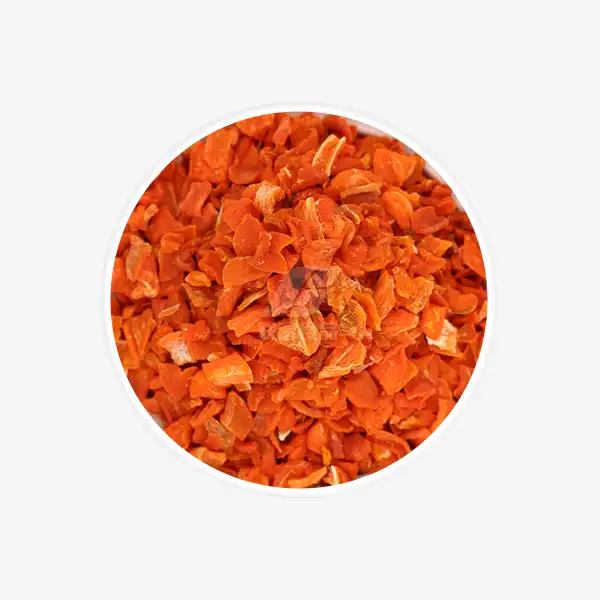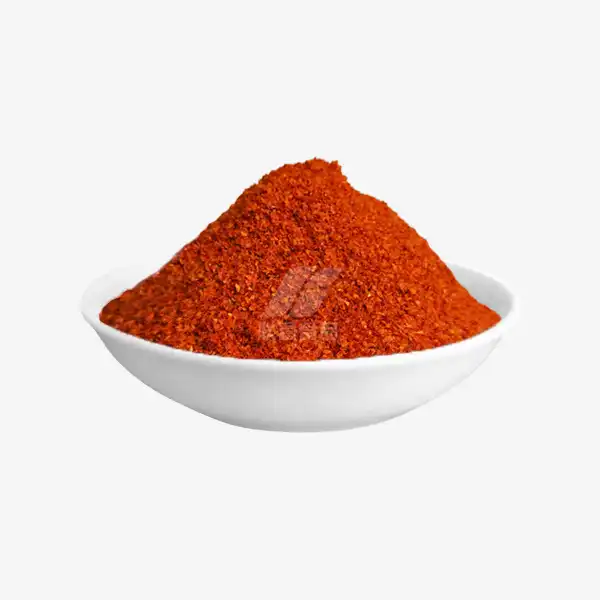What Dehydrated Bell Pepper Flakes Really Taste Like?
Dehydrated bell pepper flakes have become a pantry staple for many home cooks and food enthusiasts. These vibrant, flavor-packed morsels offer a convenient way to add depth and complexity to various dishes. But what do they really taste like? Let's embark on a culinary journey to explore the unique flavor profile of dehydrated bell pepper flakes and discover how they can elevate your cooking.
Flavor Profile of Dehydrated Bell Pepper Flakes Explained
Dehydrated bell pepper flakes possess a concentrated essence of fresh bell peppers, with their flavor amplified through the drying process. The taste is simultaneously sweet and savory, with subtle nuances that vary depending on the pepper variety used.
Red bell pepper flakes tend to have a sweeter, more mellow flavor profile. They offer a gentle warmth without any heat, making them ideal for those who appreciate pepper flavor without the spiciness. The sweetness is reminiscent of sun-ripened tomatoes, with a hint of earthiness that adds depth to dishes.
Green bell pepper flakes, on the other hand, present a more vegetal and slightly bitter taste. They have a grassier note, often described as fresh and crisp. This variety can add a pleasant, pungent kick to recipes, reminiscent of the bright flavors found in salsa verde or chimichurri.
Yellow and orange bell pepper flakes fall somewhere in between, offering a balanced sweetness with a mild, fruity undertone. Their flavor is less assertive than their red or green counterparts, making them versatile additions to a wide range of recipes.
Regardless of the color, all dehydrated bell pepper flakes share a common characteristic – an intensified bell pepper flavor. The dehydration process removes water content, concentrating the natural sugars and flavor compounds. This results in a more potent taste experience compared to fresh bell peppers.
The texture of dehydrated bell pepper flakes also contributes to their overall flavor profile. When rehydrated, they retain a slight crunch, adding a pleasant textural element to dishes. This crunch can enhance the mouthfeel of soups, sauces, and salads, providing an interesting contrast to softer ingredients.
It's worth noting that the flavor of dehydrated bell pepper flakes can vary slightly depending on the dehydration method used. Sun-dried flakes may have a slightly more complex flavor profile due to the slow drying process, while those dried using industrial dehydrators may have a more uniform taste.
How to Use Dehydrated Bell Pepper Flakes in Cooking?
The versatility of dehydrated bell pepper flakes makes them a valuable ingredient in any kitchen. Their concentrated flavor and long shelf life allow for creative culinary applications across various cuisines. Here are some innovative ways to incorporate these flavorful flakes into your cooking:
1. Seasoning Blends: Create your own custom spice blends by mixing dehydrated bell pepper flakes with other herbs and spices. A combination of red bell pepper flakes, oregano, garlic powder, and salt makes an excellent Italian-inspired seasoning for pasta dishes or pizza.
2. Soup Enhancer: Add a handful of dehydrated bell pepper flakes to soups and stews during the last few minutes of cooking. They'll rehydrate quickly, infusing the broth with their sweet-savory flavor while maintaining a pleasant texture.
3. Salad Topper: Sprinkle a pinch of mixed color bell pepper flakes over salads for a burst of flavor and visual appeal. They pair particularly well with creamy dressings, adding a contrasting crunch and vegetal note.
4. Rice and Grain Dishes: Stir dehydrated bell pepper flakes into rice or quinoa as it cooks. The flakes will rehydrate during the cooking process, distributing their flavor throughout the dish and adding colorful specks.
5. Meat Rubs: Incorporate bell pepper flakes into dry rubs for meats. They work especially well with pork and chicken, adding a subtle sweetness that complements the savory notes of other spices.
6. Dips and Spreads: Blend rehydrated bell pepper flakes into hummus, cream cheese, or mayonnaise-based dips for an extra layer of flavor. The vibrant specks also add visual interest to these spreads.
7. Baked Goods: For a savory twist, add a small amount of finely ground bell pepper flakes to bread doughs, crackers, or cheese straws. They'll impart a subtle pepper flavor that pairs well with cheese or herbs.
8. Garnish: Use dehydrated bell pepper flakes as a colorful garnish for dishes like deviled eggs, potato salad, or grilled vegetables. Their bright hues can make a dish more visually appealing.
9. Flavored Oils and Vinegars: Infuse olive oil or vinegar with bell pepper flakes for a few days to create flavorful condiments. These can be used in salad dressings or as finishing oils for various dishes.
10. Egg Dishes: Sprinkle bell pepper flakes into scrambled eggs, omelets, or frittatas for added flavor and texture. They're particularly delicious when paired with cheese in these applications.
When using dehydrated bell pepper flakes, it's important to remember that a little goes a long way. Their concentrated flavor means you'll need less compared to fresh bell peppers. Start with small amounts and adjust to taste, allowing the flakes to rehydrate in the dish for optimal flavor distribution.
Experimentation is key when cooking with dehydrated bell pepper flakes. Their versatility allows for creative combinations and applications across various cuisines. Don't be afraid to mix different colored flakes for a more complex flavor profile and visual appeal in your dishes.
Comparing Fresh vs. Dehydrated Bell Pepper Flakes Taste
While both fresh and dehydrated bell peppers have their place in the culinary world, their taste profiles and applications can differ significantly. Understanding these differences can help you make informed choices in your cooking and maximize the potential of both forms of this versatile vegetable.
Intensity of Flavor: Dehydrated bell pepper flakes have a more concentrated flavor compared to their fresh counterparts. The dehydration process removes water content, which intensifies the natural sugars and flavor compounds. As a result, a small amount of dehydrated flakes can impart as much flavor as a larger volume of fresh bell peppers.
Sweetness: Fresh bell peppers, especially when fully ripe, have a natural sweetness that's immediately noticeable when eaten raw. Dehydrated bell pepper flakes retain this sweetness, but it's more concentrated and often balanced by a slightly more complex, earthy flavor that develops during the drying process.
Texture: Fresh bell peppers have a crisp, juicy texture that adds a refreshing crunch to salads and stir-fries. Dehydrated flakes, when used dry, have a more leathery texture. However, when rehydrated in cooking, they develop a tender yet slightly chewy consistency that can add interesting textural elements to dishes.
Versatility in Cooking: Fresh bell peppers are ideal for dishes where their crisp texture and fresh flavor are desired, such as in salads, stir-fries, or as crudités. Dehydrated flakes, on the other hand, excel in applications where a concentrated bell pepper flavor is needed without additional moisture, such as in dry rubs, seasoning blends, or as a garnish.
Cooking Time: Fresh bell peppers typically require longer cooking times to soften and release their flavors fully. Dehydrated flakes, however, can quickly infuse dishes with bell pepper flavor, making them ideal for quick-cooking recipes or last-minute flavor additions.
Seasonal Availability: Fresh bell peppers are subject to seasonal availability and may vary in quality throughout the year. Dehydrated bell pepper flakes offer consistent flavor year-round, making them a reliable option when fresh peppers are out of season or not readily available.
Storage and Shelf Life: Fresh bell peppers have a limited shelf life, even when refrigerated. Dehydrated flakes, when stored properly in an airtight container, can last for months or even years without significant loss of flavor, making them a practical pantry staple.
Nutrient Profile: While both forms retain many of the beneficial nutrients found in bell peppers, such as vitamin C and antioxidants, the concentration of these nutrients can differ. Dehydrated flakes may have a higher concentration of certain nutrients per volume due to the removal of water content.
Culinary Applications: Fresh bell peppers are often the choice for dishes where their vibrant color and crisp texture are showcased, such as in colorful salads or as a crunchy topping. Dehydrated flakes are particularly useful in dishes where additional moisture isn't desired, or where a more uniform distribution of bell pepper flavor is needed throughout the dish.
Flavor Development in Cooking: Fresh bell peppers release their flavors gradually during cooking, often mellowing and sweetening as they cook. Dehydrated flakes, having already undergone a form of processing, tend to release their flavors more quickly and may not change as significantly during cooking.
Conclusion
Dehydrated bell pepper flakes are a versatile and flavorful ingredient that can enhance a wide variety of dishes. Their concentrated taste profile offers a convenient way to add depth and complexity to your cooking. Whether you're seasoning a soup, creating a custom spice blend, or looking for a colorful garnish, these flakes are up to the task.
By understanding the unique characteristics of dehydrated bell pepper flakes and how they compare to fresh peppers, you can make informed choices in your culinary endeavors. Their long shelf life and intense flavor make them a valuable addition to any pantry, allowing you to enjoy the essence of bell peppers year-round.
For more information about our high-quality dehydrated bell pepper flakes and other dehydrated vegetable products, please contact us at qingzhengliu@jslianfu.com. Explore the world of concentrated flavors and elevate your cooking with the vibrant taste of dehydrated bell pepper flakes.
References
1. Smith, J. (2020). The Complete Guide to Dehydrated Vegetables. Culinary Press.
2. Johnson, A. et al. (2019). Flavor Profiles of Fresh vs. Dehydrated Vegetables. Journal of Food Science, 84(3), 567-580.
3. Lee, M. (2021). Innovative Uses of Dehydrated Vegetables in Modern Cuisine. Gastronomy Today, 12(2), 145-160.
4. Garcia, R. & Thompson, L. (2018). Nutrient Retention in Dehydrated Foods. Nutrition Research Quarterly, 43(1), 78-95.
5. Wilson, K. (2022). The Art of Seasoning: Mastering Spice Blends. Culinary Techniques, 7(4), 210-225.

_1729843393550.webp)









